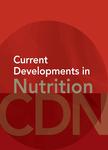版权所有:内蒙古大学图书馆 技术提供:维普资讯• 智图
内蒙古自治区呼和浩特市赛罕区大学西街235号 邮编: 010021

作者机构:Visiting Scholar The Johns Hopkins Bloomberg of Public Health PhD Student Serviço de Imunologia Básica e Clínica Departamento de Patologia Faculdade de Medicina da Universidade do Porto EPI Unit - Instituto de Saúde Pública Universidade do Porto Swiss Tropical Institute of Public Health University of Basel Basel Switzerland Cancer Prevention and Control Program University of South Carolina Department of Epidemiology and Biostatistics Arnold School of Public Health University of South Carolina Connecting Health Innovations LLC Director Cancer Prevention and Control Program University of South Carolina Health Sciences Distinguished Professor Department of Epidemiology and Biostatistics Arnold School of Public Health University of South Carolina President and Scientific Director Connecting Health Innovations LLC National Heart and Lung Institute Imperial College London UK Program in Human Nutrition Department of International Health The Johns Hopkins Bloomberg School of Public Health
出 版 物:《Current Developments in Nutrition》
年 卷 期:2020年第4卷第SUPPL 2期
页 面:4141393-4141393页
摘 要:AbstractObjectivesTo investigate the association between Dietary Inflammatory Index (DII®) and lung function in European adults. MethodsThe study sample was drawn from the Global Allergy and Asthma Network of Excellence (GA 2LEN) screening survey, in which 55,000 adults aged 15 to 75 years answered a postal questionnaire on respiratory symptoms. A stratified random sample was obtained for follow-up. A cross-sectional study was conducted in this sample ( n = 3241), which included ascertainment of dietary intake and measures of lung function. Participants completed the internationally validated GA 2LEN food frequency questionnaire (FFQ), which enquired about usual intake of 245 food items. The dietary inflammatory index (DII®) was derived to ascertain the inflammatory potential of the diet (minimum and maximum reference range –8.87 to 7.98; i.e., the higher the score the more pro-inflammatory the diet). Participants performed post-bronchodilator spirometry, from which forced vital capacity (FVC), the ratio between the forced exhaled volume in 1 second (FEV1) and FVC (FEV1/FVC), FVC below lower limit of normal (FVC LLN; (restriction)) and FEV1/FVC LLN (airway obstruction) were calculated. Exposures and lung function outcomes were weighted to obtain estimated population parameters. Potential confounders included age, sex, height, body mass index, smoking status, country, education and employment. Adjusted regressions were used to investigate the associations between DII and respiratory outcomes. ResultsThe mean age of participants was 48 years (SD ± 15.1), and the median DII was –1.53 (IQR difference 3.5). In the fully adjusted models, a one-unit increase in DII score was statistically significantly associated with a lower FEV 1/FVC (β-coefficient –0.46, 95% CI –0.80, –0.12; P-value = 0.008) and with airway obstruction (odds ratio [OR] 1.17, 95% CI 1.03, 1.34; P-value = 0.018]. There was no association with the other lung function outcomes. ConclusionsA more pro-inf